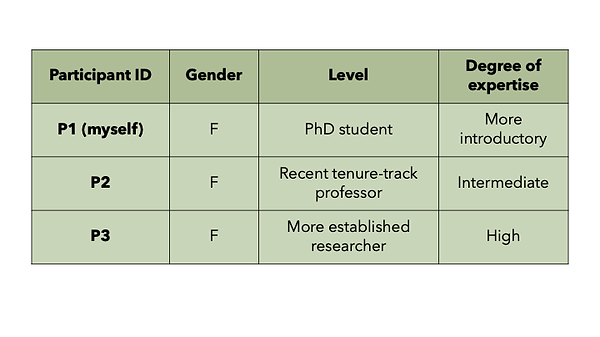Lion Tooth Marks Scoring Method
I tested the use of a method for evaluating how lions damage or destroy the bones of the prey they eat.
We evaluated the bones of multiple zebra skeletons that were chewed by lions. Each bone was analyzed on a score of 0 (no damage) to 4 (extreme damage), but descriptions varied depending on the bone type.
This research was published in the journal PALAIOS in 2020.
Team
We were a team of three academic researchers. I was involved in all aspects of the research and solely responsible for data analysis and visualization.
Research Questions
-
Can all analysts obtain the same results using the method?
-
If they ran into some difficulties, what were they and how can we adjust the method based on their feedback?

Industry analysis
We conducted a search in the scientific literature for existing methods used to evaluate how predators impact the bones of their prey. We found that very few existing methods are as systematic as ours. We found existing methods for the following predators that known to gnaw or collect bones, but none for lions:

Hyena brunnea
Break bones

Hyena hyena
Collect bones in dens

Crocuta crocuta
Collect bones in dens
Participants
The three authors tested the method independently on the same collection of bones. We decided to focus on the bones of zebras because they were the most common prey type.
Incentive
Our long-term goal would be to use this same method to recognize the action of unknown predators in the fossil record.

Method
We look at 100s of bones of zebras that were the prey of lions.
Each participant scored the bones on a damage level between 0 (no damage) to 4 (extreme damage). One of my colleagues created appropriate levels of destruction for each bone after conducting research observing lion eat their prey in a national park in Kenya.

Some of the lion-chewed zebra bones we analyzed
Results
We used the Fleiss (1971) Multirater Kappa to evaluate the agreement between analysts, where a value between -1 and 0 indicates agreement that is worse than expected by chance, 0 indicates an agreement between analysts that is the same as chance, and values between 0 and 1 indicate agreements more likely than chance, with 1 representing a perfect agreement between analysts.
The three analysts attributed identical damage level classifications to most bone portions
(70.9%; Fleiss’ Kappa for inter-analyst agreement = 0.723). The largest difference was between the most experienced of the three analysts and the least experienced one (me), which implies that expert knowledge could have impacted the accuracy of the initial results.
The source of errors were:
13.8% typos
86.2% descriptions too vague
We then decided to correct the typos and clarify the descriptions that were too vague.
After revisions, we obtained almost perfect agreement (Fleiss’ Kappa for inter-analyst agreement 0.995, between 81% and 100%, depending on the bone).


The Expert
Is thoroughly familiar with examining traces left by carnivores of other agents (ex: water) on bones.

The Non-Specialist
Is not as familiar with evaluating traces left on bones, but are familiar with the skeleton and may wish to include this analysis as part of a larger study.

The Student
Has a basic understanding of the skeleton and may be asked to complete a report on the theme of tooth marks for a class
Personas
User Validations
-
The method should return the same results regardless of the expertise level of the user
-
The method should be precise enough for experts but broad enough to allow less experienced users to classify the bones rapidly

One of the figures we used to illustrate the damage lions create on different bones of their prey’s skeleton
Reflection
-
Can we adapt the method for with less experienced users, like college students
-
We should test the method on different types of prey (for example, how does prey size affect the results?)
-
We can also explore the use of the method on other predators, like the mountain lion, which may share certain behavioral similarities with the African lion
